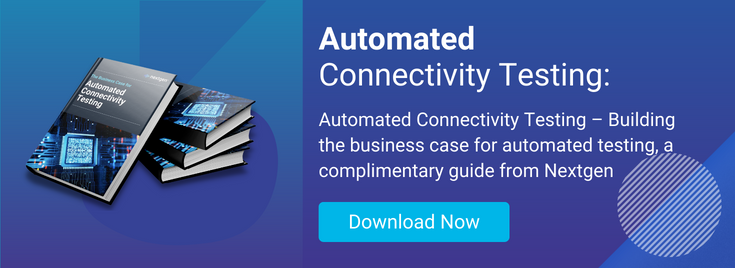Ensuring Product Stability: The Importance Of Regression Testing In The Development Process

Developing a new product or updating an existing one can be a complex process involving many different stages of testing to ensure reliability and quality. A crucial part of this is ensuring product stability -which refers the ability of a product or system to sustain its physical and performance integrity over a given period of time, and under a defined set of performance and usage conditions.
What Does Stability Mean For Consumer Electronics And IoT Products?
In consumer electronic products, IoT devices, and mobile applications, a ‘stable’ product will be able to maintain an acceptable high level of performance under a wide range of conditions and usage loads. Factors like a sudden increase in usage, extreme temperature fluctuations, or mechanical damage can affect product stability and suddenly reduce performance value, so the regression testing process is designed to simulate real-life utilisation and pre-empt any performance issues – thereby ensuring that end-users have a satisfactory experience with the product. In other words, a stable system performs as it says on the tin, without any unexpected failures and malfunctions.
Why Is Regression Testing So Important?
Regression testing is a key aspect of ensuring product stability, to ensure ongoing quality and usability throughout the product’s life cycle. Regression testing is often deployed after a product is released whenever market updates and changes are made. A reliable regression testing strategy will help strengthen confidence in these product changes among consumers, improve team morale and stakeholder buy in, and enhance the overall success of product development initiatives.
How Does The Regression Testing Process Work?
Regression testing involves repeated performance tests to ensure that changes to a product – such as adding or updating features or fixing bugs – do not qualitatively change the behaviour, performance criteria, or functionality of existing features in unforeseen ways.
The process isn’t exclusively for modifications to existing products. Regression testing can also be used during product development to test different product variations or scenarios to determine the best possible outcome and avoid production errors.
Taking an integrated approach to regression testing throughout product development can identify issues early on and ensure that they are addressed before the product is released to market.
By using regression tests, developers can avoid accidental negative impacts on other parts of the product whenever changes are made in certain areas, improving overall stability and security regardless of how often it gets modified or updated. Early detection of issues through regression testing can help reduce the amount of time and expense wasted addressing these problems later in the development cycle, and avoiding customer dissatisfaction and loss of revenue arising from quality issues.
At its core, regression testing is a proactive strategy for minimising the operational risks associated with code and system improvements, and for avoiding unintended performance issues.
What Are The Advantages Of Regression Testing?
In the consumer electronics and IoT application sector, regression testing provides many benefits to product developers. For example:
-
Businesses can immediately identify or pre-empt bugs or errors in their products that could disrupt the customer experience or cause technical problems post launch.
-
Detailed analysis of test results facilitate a fast response to any problems that do arise, allowing developers to make the necessary corrections and updates quickly in order to sustain customer satisfaction.
-
Regression testing can help developers determine whether new features – if implemented – will be fully compatible with other features of the product, which is useful when planning subsequent product releases and updates.
What Are The Disadvantages Of Regression Testing?
-
The main disadvantage of regression testing is that it can be a complicated and labour-intensive process, and therefore adds cost and time scale to a tight development cycle.
-
The process requires valuable time and resource to create a comprehensive regression test strategy that exhaustively covers each product’s features and functionality. Regression testing is significantly more costly than initial testing, due to all of the extra validation associated with the process.
-
When conducted manually on complex systems and products, many regression tests can become unmanageable long, taking too much effort to set up, execute, or sustain within a rapidly changing development ecosystem.
Automated Regression Testing With Nextgen ATAM Connect- How An Automated Testing Platform Can Save You Time And Resources
Automating your regression testing process can save you valuable time and money by streamlining and automating a wide range of repetitive testing tasks that would otherwise be completed manually. This negates all the disadvantages of regression testing mentioned earlier in this article, while enhancing the benefits to deliver increased performance, value and budgetary efficiency.
By freeing up developer time away from manual tasks, human resources can be deployed to other, more complex aspects of product development, such as addressing critical issues or implementing new features.
Automation helps improve the consistency and repeatability of regression testing by providing reliable metrics and test results for side-by-side comparison. Nextgen’s automated codeless testing platform, ATAM Connect, enables your product development team to create more test cases in the same time, maximising team resources.
To find out more about automated regression testing and how it can support your QA processes, please download a copy of our free guide: Automated Connectivity Testing. More information about how our technologies are used for connected product testing in industrial IoT applications can also be found on our website here.
Please feel free to call us directly on +44 3331 120 000 if you have any questions or would like to discuss a project with one of our experienced team.




